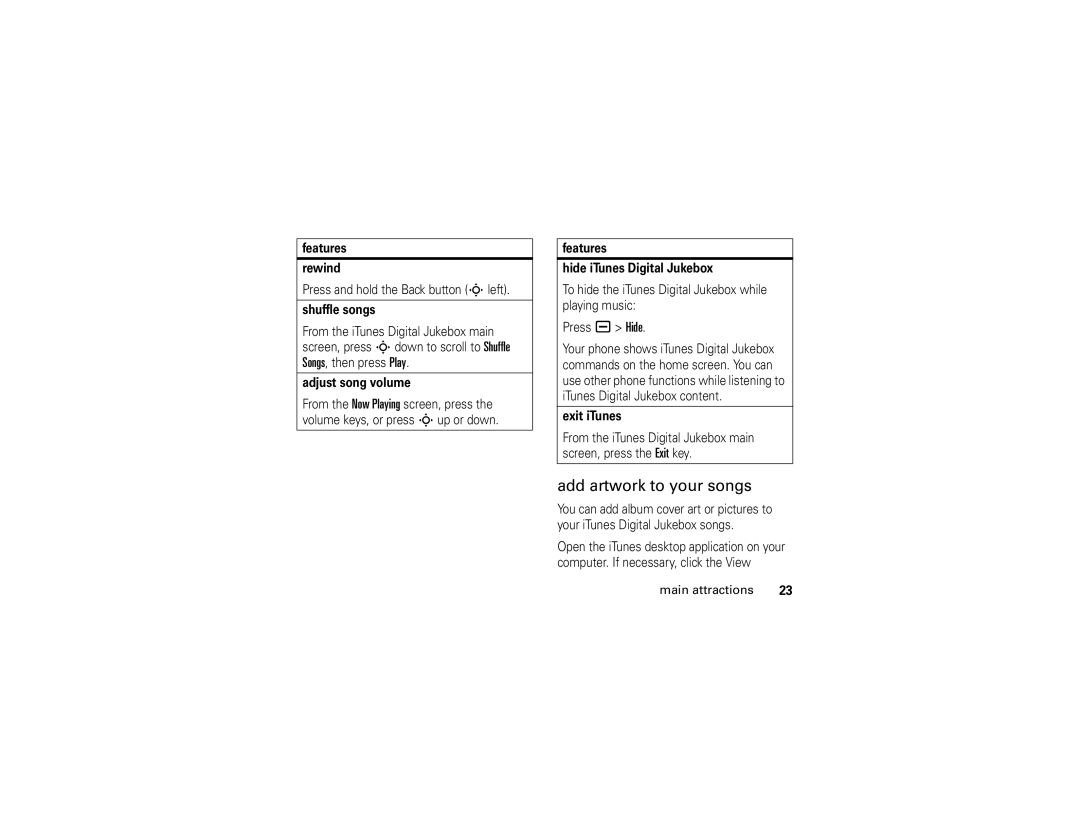V3i specifications
The Motorola V3i, introduced in 2006, epitomizes the sleek design and innovation of its era in mobile technology. As a next-generation version of the iconic V3 Razr, the V3i combined aesthetic appeal with enhanced functionality, making it a favorite among consumers seeking a stylish yet practical device.One of the standout features of the V3i is its striking design. Sporting a refined aluminum body, the phone boasts a premium feel and slim profile, measuring just 13.5 mm in thickness. Its clamshell form factor not only contributed to its attractiveness but also protected the display and keypad when closed. The V3i was available in several color options, including the timeless silver and a more contemporary black, allowing users to express their individuality.
The display of the V3i is another impressive aspect, featuring a vibrant 2.2-inch TFT screen capable of displaying 262,144 colors. This made for clear, sharp images and facilitated an engaging user experience, whether for texting or viewing photos. The internal screen was complemented by a secondary external display, which provided notifications and caller ID without needing to flip open the device.
In terms of technology, the V3i was equipped with support for GSM and GPRS networks, ensuring solid connectivity around the globe. The phone also introduced support for iTunes, allowing users to manage and enjoy their music directly from the device. This integration was a significant selling point, as users could easily download and store their favorite tracks, transforming the V3i into a stylish music player.
Photography enthusiasts appreciated the inclusion of a 1.3-megapixel camera. Although modest by today's standards, this capability enabled users to capture decent quality images and share them with friends. The V3i also supported multimedia messaging, enabling users to send photos and other media effortlessly.
With a talk time of up to 6 hours and a standby time of approximately 250 hours, the V3i was designed to keep pace with active lifestyles. Its user-friendly interface and intuitive controls made navigating through applications and features a breeze.
Despite the rise of smartphones, the Motorola V3i remains a significant milestone in mobile phone history, showcasing how design and functionality can coexist harmoniously. This model not only left a lasting impression in the world of mobile devices but also set the stage for future innovations in the industry. The Motorola V3i continues to be celebrated as a classic example of early 2000s mobile technology, symbolizing a pivotal shift toward more stylish and compact devices.

